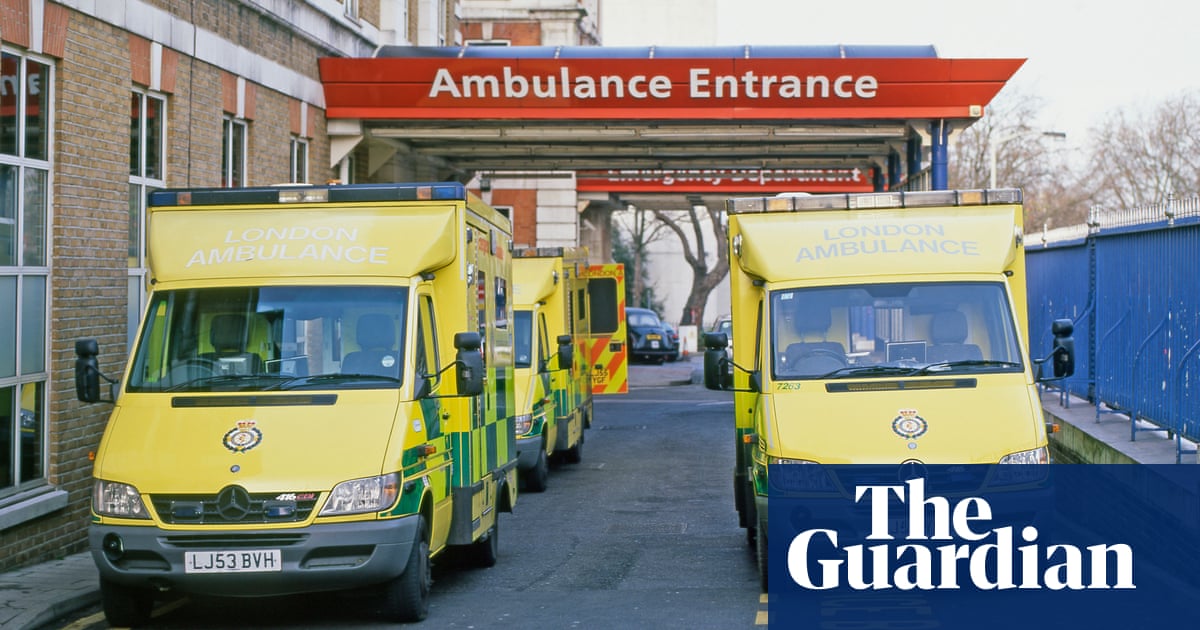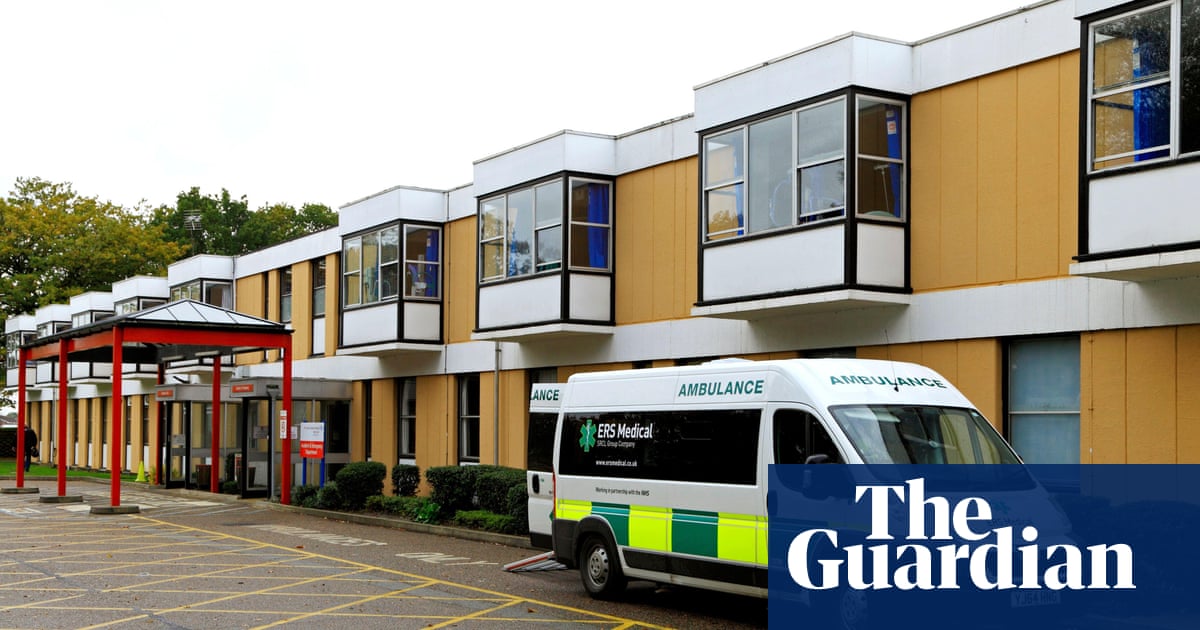
NHS bosses have told hospitals across England to be ready to evacuate staff and patients if buildings containing concrete at risk of collapse start to fall down.
NHS England issued the instruction to all 224 health trusts on Tuesday in the wake of the row over reinforced aerated autoclaved concrete (Raac), which has led to the closure of more than 100 schools.
The letter from Dr Mike Prentice, the organisation’s national director for emergency planning and incident response, and Jacqui Rock, its chief commercial officer, tells trust officers that they should familiarise themselves with a “regional evacuation plan” drawn up by the NHS in the east of England so that hospitals can implement it in the event that buildings that contain Raac start to crumble.
While all trusts should do so it was “essential” that the 19 trusts with the largest numbers of facilities built using Raac do so “as a matter of priority”, the letter stated.
It said: “A regional evacuation plan was created and tested in the east of England. Learnings from this exercise have been cascaded to the other regions.
“We would recommend that all [trust] boards ensure that they are familiar with the learning from this exercise and that they are being incorporated into standard business continuity planning as a matter of good practice.
“This exercise is, however, essential for those organisations with known Raac, and should be done as a matter of priority if it has not already been completed.”
The letter was sent to the chair, chief executive and estate leads for all 224 trusts and 42 integrated care boards in England, which are regional groupings of NHS trusts and local councils.
Hospitals were also told in the letter that they needed to have plans in place to allow for the “decant of patients and services where Raac panels are present in clinical areas” in the event of “Raac failure” – buildings starting to fall down.
Nurses would be “alarmed” at trusts having to prepare evacuation plans, the Royal College of Nursing said.
“Nursing staff and patients deserve to feel safe and will be alarmed at this letter warning trusts to get ready to evacuate hospitals if they are at risk of collapse,” said Leona Cameron, its head of health, safety and wellbeing.
Saffron Cordery, the deputy chief executive of NHS Providers, which represents hospital trusts, said: “Trust leaders repeatedly warned that Raac presented a major risk to patient and staff safety and they will do everything they can to ensure patients, staff and services remain safe, including having stringent monitoring and evacuation plans in place for hospital buildings built with Raac planks.”
One of the hospitals facing the worst Raac problems, Hinchingbrooke in Cambridgeshire, previously had to ban obese patients – anyone weighing more than 120kg (19st) – from having surgery in any of its operating theatres except a theatre on the ground floor, in case their weight increased the risk of floors cracking. The ban remains in place.
More trusts may be using buildings constructed with Raac than the 19 already known about, NHS England suggested on Tuesday. As part of updated Raac guidance it issued in May, it asked trusts to assess their entire estate to see if they included any clinical or other facilities – such as administration blocks or education centres – that were built with Raac.
In the letter, it said “initial assessments of additional sites identified through this process are already being undertaken and are expected to be completed by the end of this week”.
NHS England sent this latest advice to trusts after the Department for Education last week issued new guidance about Raac in schools. That has forced dozens of schools to close and find alternative premises in which pupils can study in the autumn term and kickstarted a major political dispute, with claims that ministers – including Rishi Sunak – did too little to act on warnings.
The risks posed by Raac to hospitals are so serious that the 19 badly affected trusts must ensure their plans to monitor its presence and minimise the risks of buildings collapsing “are sufficiently robust and being implemented”, NHS England added in the letter. That was necessary “to maintain both the safety and confidence of staff, patients and visitors”, it said.
Seven trusts run a hospital made mostly of Raac planks and 12 others have at least one building that was erected using the material. That form of concrete, which one hospital boss has likened to an Aero chocolate bar because it contains so many air bubbles, was used widely in the construction of schools and hospitals from the 1950s to 1990s. However, it has long passed its 30-year expected lifespan, leaving facilities built with Raac in danger of falling down.
A number of hospitals have had to install hundreds of props around affected buildings to ensure that roofs, ceilings, floors and walls do not start to disintegrate. For example, the Queen Elizabeth hospital in Norfolk has 2,400 props holding up the roof.












